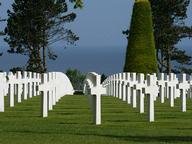Quiz Answer Key and Fun Facts
1. September 1940 saw the discovery of the Lascaux Cave and its ancient paintings believed to have been created over 17,000 years ago. In which country was this amazing site found?
2. Codenamed Operation Barbarossa, Germany's plan for the invasion of which country was launched on June 22, 1941?
3. Victory at the Second Battle of El Alamein in November 1942 provided a much-needed morale boost for the Allies during the Second World War. Where did the battle take place?
4. In which country did the Zoot Suit Riots take place between June 3 and June 8, 1943?
5. In which country was the hiding place of Anne Frank and her family discovered on August 4, 1944?
6. The Second World War is generally considered to have ended with the signing of an instrument of surrender on board the warship USS Missouri on September 2, 1945. In which country's waters was the ship located during this historic event?
7. Which country held a referendum on whether to retain their monarchy on September 1, 1946?
8. The Partition of India took place at the stroke of midnight between August 14 and August 15, 1947. It granted independence from the British Empire to India and which other new country?
9. In which country was a National Health Service launched on July 5, 1948 with the aim of making healthcare available to all regardless of their wealth or ability to pay?
10. On May 4, 1949, the Superga air disaster resulted in the death of the majority of which country's national football team?
Source: Author
Fifiona81
This quiz was reviewed by FunTrivia editor
bloomsby before going online.
Any errors found in FunTrivia content are routinely corrected through our feedback system.
